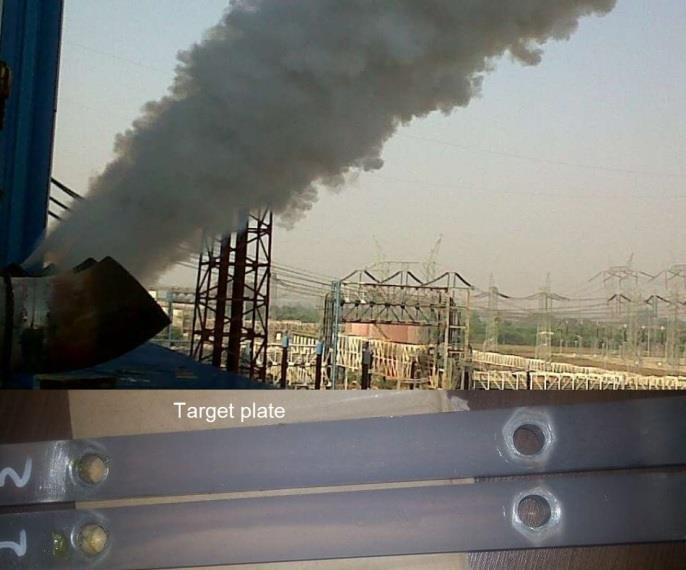This Steam Blowing procedure is intended to provide general application guidance and establish controls during Steam Blowing of piping and equipment. The purpose of steam blowing, prior to start-up of a new unit, is to remove any foreign material in the superheater and steam piping after the erection completion. Considerable damage could result, if such foreign material is allowed to enter the steam system or steam turbine during initial operation.

The basis behind steam blowing is to create a momentum equal to or preferably greater than that during normal operation. This will blow out all the loose debris from the system. The two methods in practice for steam blowing are puffing method and continuous blowing. In the puffing method, a thermal shock is created, whereas in continuous blowing method, constant purge steam rate is maintained. In the puffing method, the pressure is allowed to decay during blowing.
Requirements for Steam Blowing
Temporary pipes and temporary valves used for steam blowing must be equal to the maximum sizes of permanent pipes. Sharp elbows, bends and tees are to be avoided in temporary piping as these contribute to increased pressure loss during steam blowing conditions. Temporary discharge piping should be well supported to withstand reacting forces during blowing. The steam must be exhausted to atmosphere outside the turbine hall. Since, steam blowing is not a normal operation procedure, extreme care should be taken to ensure safely of personal and equipment. The area should be cordoned off and notice should be displayed prominently. For thermal expansion of the pipe, proper allowances must be given. First steam blow is given at a lower mass flow of steam and the pipe lines are to be surveyed for proper expansion and supports. Ensure that all permanent hangers of various pipe lines including main steam line is erected as per drawing and the values set accordingly to the design values also ensure that locking of hangers are removed. Ensure that remote operation of startup valve, main steam stop valve and its bypass valve is possible. Ensure that flow nozzles, control valves non return valve flaps are not erected before steam blowing. Spool pieces may be erected at its places wherever applicable. Ensure that hydraulic test of pressure part/ pipe lines are completed.Ensure that insulation of temporary and permanent piping is completed as per schedule before starting the steam blowing.
Steam Blowing procedure
The steam generating unit is started in normal manner following a cold start-up procedure. All recommendation with reference to drains, vents, firing system etc should be followed.
The boiler should be brought-up slowly and the expansion movement should be monitored. When the drum pressure reaches the pressure value of 5kg/cm2(g), the first blowing can be started.
Fuel feeding is discontinued and the blow-off valve is opened to blow through the superheaters, main steam line and out of the temporary blow off piping. When the drum pressure drops 1o kg/cm2(g), the blow-off valve is closed and the firing is started to establish the blowing off at 40kg/cm2(g) or 85% of the boiler working pressure, whichever is lower.
The blowing is started once again at this pressure and when the pressure drops to 20kg/ cm2(g) or 50% of the blowing pressure, the blow off valve should be closed. The cycle is repeated until the cleaning is considered satisfactory. Maintain at least 3 hours time gap between the consecutive blows.
During the steam blowing, the drum level will be subjected to extreme fluctuations. Therefore, it is important that the drum level is established at or slightly above normal operating level before the start of each below.
After 2 to 3 blows, place the impact specrmen (Aluminium target plate) in its pre determined location (place the target plate at the nearest possible final user point) and inspect the target plate.
Indications for the result of steam blowing are the number of pitting / impression found on the target plate. The highest velocity of steam is in the center of pipe and hence judgment should be made at this area. It is recommended to place the target plate after completing few blows in each stage.
The result of blowing operation can be judged by the absolute number of pitting / impression on target plate central zone.
Acceptance Criteria
The piping is considered clean if there are not more than 5 (five) pitting less than 1 mm diameter in central zone area and shall not have any deformed edge. Besides this there shall be no pitting in the rim zone.[bws_pdfprint]
 Boilersinfo Boiler and Mechanical Power Digital Library
Boilersinfo Boiler and Mechanical Power Digital Library